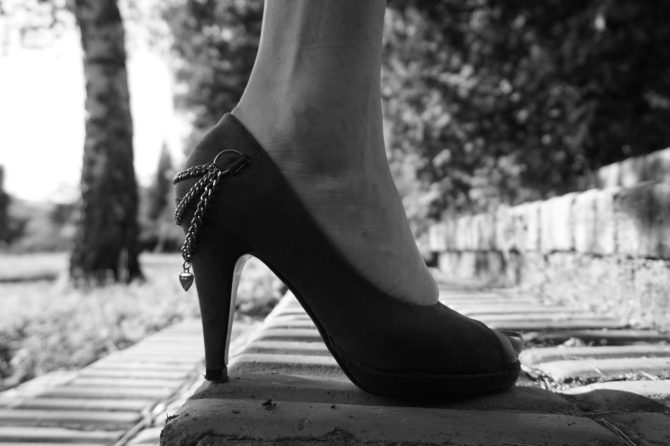
What is Pump Bump?
“Pump Bump” is a term used to describe Haglund’s Deformity. The “bump” part refers to a physical bump that forms on the back of your heel where the Achilles tendon and the heel bone (calcaneus) attach. The soft tissue near this raised area becomes irritated when it rubs against shoes and can lead to bursitis (a painful inflammation).
Why is it Called Pump Bump?
The term “Pump Bump” came about from the belief that women’s pump-style high heels were a leading factor in the growth of these bony enlargements.
Is That Really True?
Back in 1927 when the condition was first named, it was described as idiopathic, which means it had no apparent cause. Today, we know that many factors can lead to Haglund’s Deformity, and while shoes may be a contributing factor, high heels are not solely to blame. Haglund’s Deformity can happen to anyone.
So, How Does Haglund’s Deformity Really Happen?
Haglund’s deformity has been linked to a variety of factors including:
- A prominent heel bone that slopes outward.
- Feet that roll outward when walking (supination).
- A tight Achilles tendon.
- A high-arched foot structure.
- Shoes or boots with rigid backs (dress shoes, work boots, ice skates, etc.).
How Would I Recognize Haglund’s Deformity?
Haglund’s deformity can appear on both feet or just one. You may see or experience:
- A visible bump on the heel.
- Swelling in the heel.
- Redness near the inflamed tissue.
- Calluses or blisters on the heel where the bump rubs against shoes.
- Pain in the area where the Achilles tendon attaches to the heel, especially when walking.
Do I Need to See a Podiatrist for Haglund’s Deformity?
The deformity itself is not a danger but can be a source of pain or a cause of other conditions and injuries such as bursitis (painful inflammation), calluses, and blisters. The condition needs treatment if it causes pain or walking problems.
How Will the Foot Doctor Diagnose Me?
Your FAAWC providers identify your Haglund’s deformity by looking at your heel and discussing any contributing risk factors. Diagnostic tests, such as an X-ray or MRI, may be used to evaluate the shape of the heel bone and to determine the severity of the condition. These tests can help you and your doctor decide which treatment options may be best.
How is Haglund’s Deformity Treated?
Since Haglund’s deformity is a change in the underlying structure of the foot treatment does not alter the bone itself. Rather, treatment is aimed at relieving pain and improving quality of life. Some non-surgical treatment choices include:
- Shoe modifications or wearing different shoes.
- Heel lifts in shoes to help bring the heel up and avoid friction.
- Heel pads inside the backs of shoes to help reduce irritation.
- Footwear arch supports for people with high arches.
- Anti-inflammatory drugs, such as ibuprofen, to ease pain.
- Ice on the heel to help relieve inflammation and pain.
- Stretching exercises to alleviate a tight Achilles tendon.
- Avoiding activities that aggravate the condition.
- A soft cast or walking boot to keep the heel bone from rubbing.
- Physical therapy to bring relief.
Will I Need Surgery?
Surgery may be needed when non-surgical treatments do not relieve symptoms. Surgery aims to remove the part of the heel bone that is sticking out. Surgery may also be used to repair the Achilles tendon if it is damaged. The type of procedure depends on how severe the Haglund’s deformity is, the person’s health history, and their lifestyle.
How Do I Avoid Haglund’s Deformity?
People cannot avoid Haglund’s deformity in every case. You may, however, be able to reduce your risk of developing it by:
- Wearing shoes that have open backs or soft, flexible backs.
- Stretching correctly before and after exercise, especially the calves, Achilles tendon, and feet.
- Wearing shoes that have proper arch support (for people with high arches).
- Taking a gradual approach to strenuous exercises, such as running, to avoid overuse injuries.
- Seeing a medical professional right away for heel pain.
What Do I Do If I Think I Have Haglund’s Deformity?
Haglund’s Deformity may get worse over time if it is left untreated. Talk to your FAAWC provider today if you have been experiencing heel pain or see a hard bump on the back of the heel. You should never ignore foot pain. Treatment from a qualified health professional is key to resuming regular activity as quickly as possible.
Leave a reply